Why you can trust Tom's Hardware
The PXC327’s User picture mode is a good starting point for calibration because it makes all image controls available. It does require some adjustment for optimal quality though.
Grayscale and Gamma Tracking
Our grayscale and gamma tests use Calman calibration software from Portrait Displays. We describe those tests in detail here.
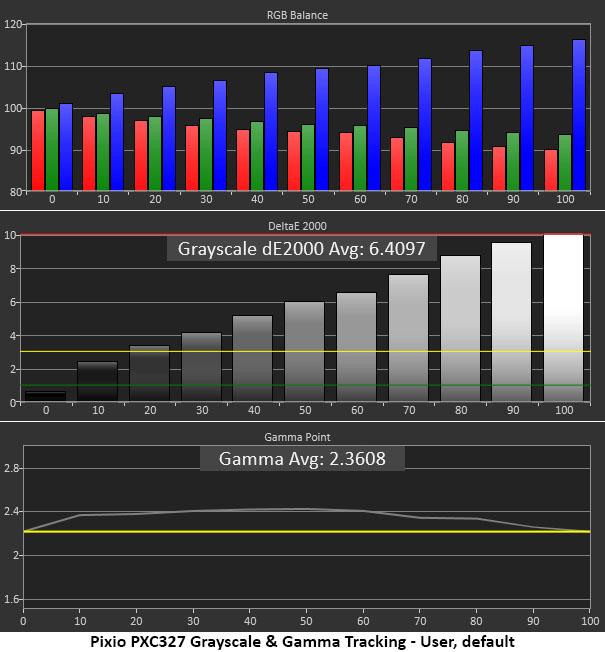
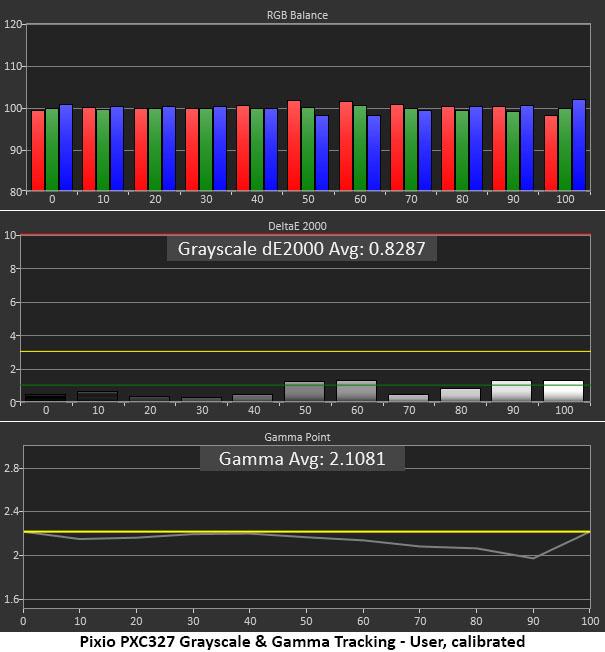
The default color temp preset is Normal (first chart), and it runs fairly cool with blue errors increasingly visible from 20-100% brightness. The Warm preset is too warm with a similar degree of red errors. The best bet is to dial in the User mode which results in excellent error-free grayscale tracking (second chart). This adjustment lowers the gamma as well with a dip in the chart starting at 60% brightness. That is an indication of possible highlight detail clipping, but we were able to see everything without trouble. The luminance error is a minor one. Ultimately, our calibration improved the picture considerably, making it brighter and more vibrant.
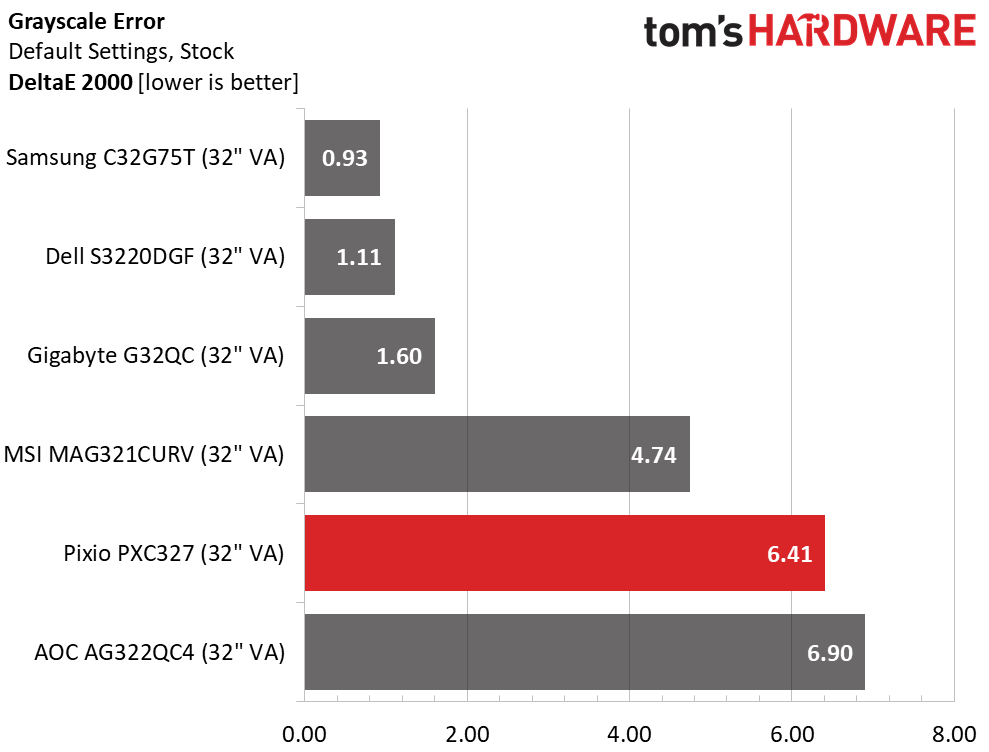

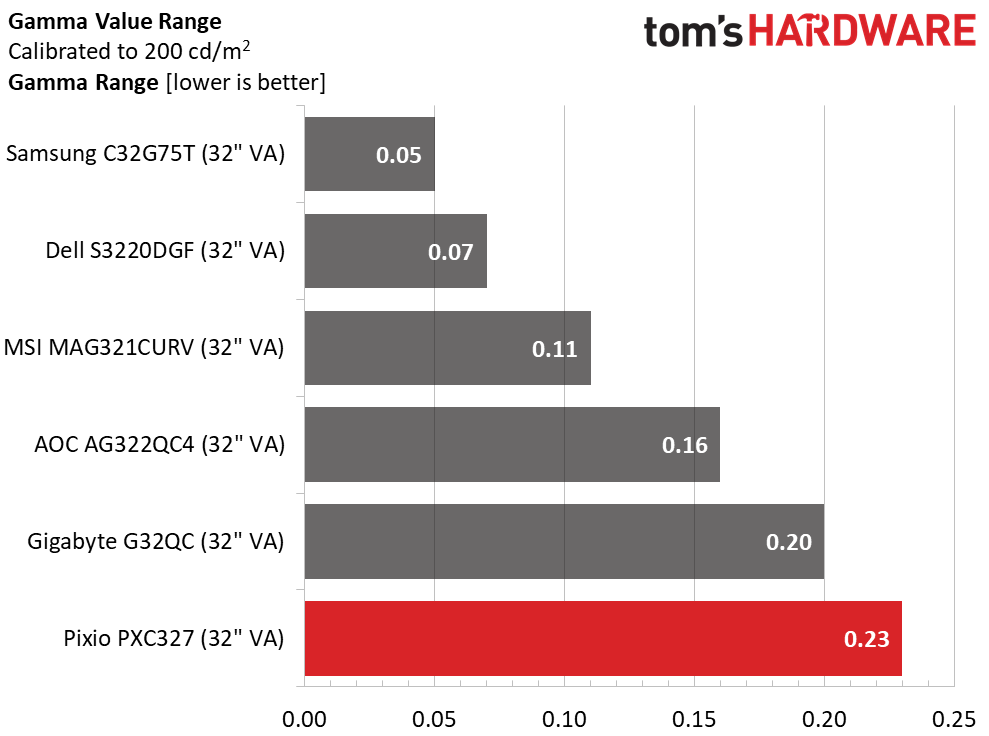
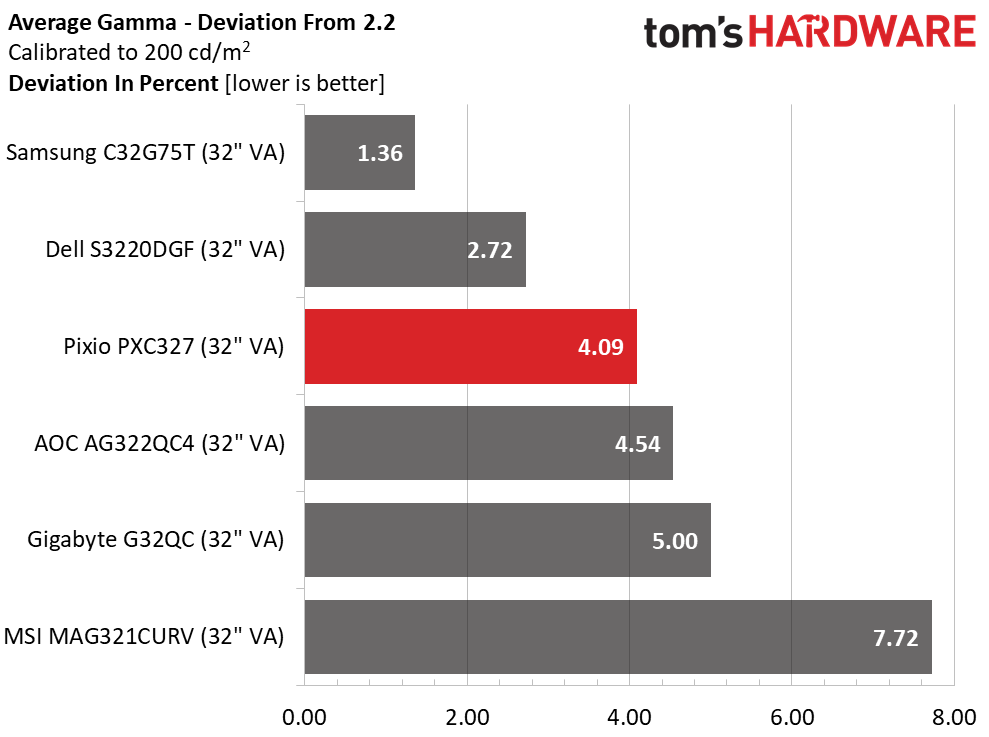
A grayscale error 6.41 Delta E (dE) is a clearly visible grayscale error, but we easily corrected it by using the RGB controls in the User color temp preset. With a few changes, we got the average down to an excellent 0.83dE, a third place finish in a strong group of displays.
Post-calibration gamma isn’t perfect, but the range of values and deviation from the 2.2 spec aren’t enough to spoil the image. As you’ll see below, color tracking is exemplary.
Color Gamut Accuracy
For details on our color gamut testing and volume calculations, click here.
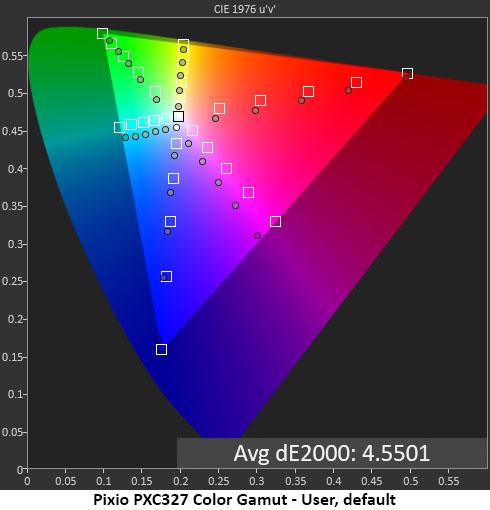
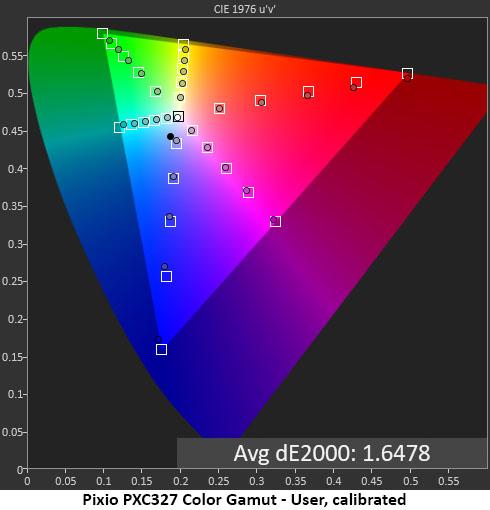
Just like the grayscale test, the PXC327 starts out with a color gamut result that needs some work. The bluish white point pulls magenta and cyan off their hue targets, and we can see some undersaturation in the red primary. Green is also undersaturated, though that is typical of DCI-P3 monitors.
Get Tom's Hardware's best news and in-depth reviews, straight to your inbox.
Calibration (second chart) improved the error significantly, taking the PXC327 to near-professional levels. Hue tracking becomes spot-on for all six colors with no visible saturation issues. The SDR picture looks superb with deep contrast and bold color.
Comparisons
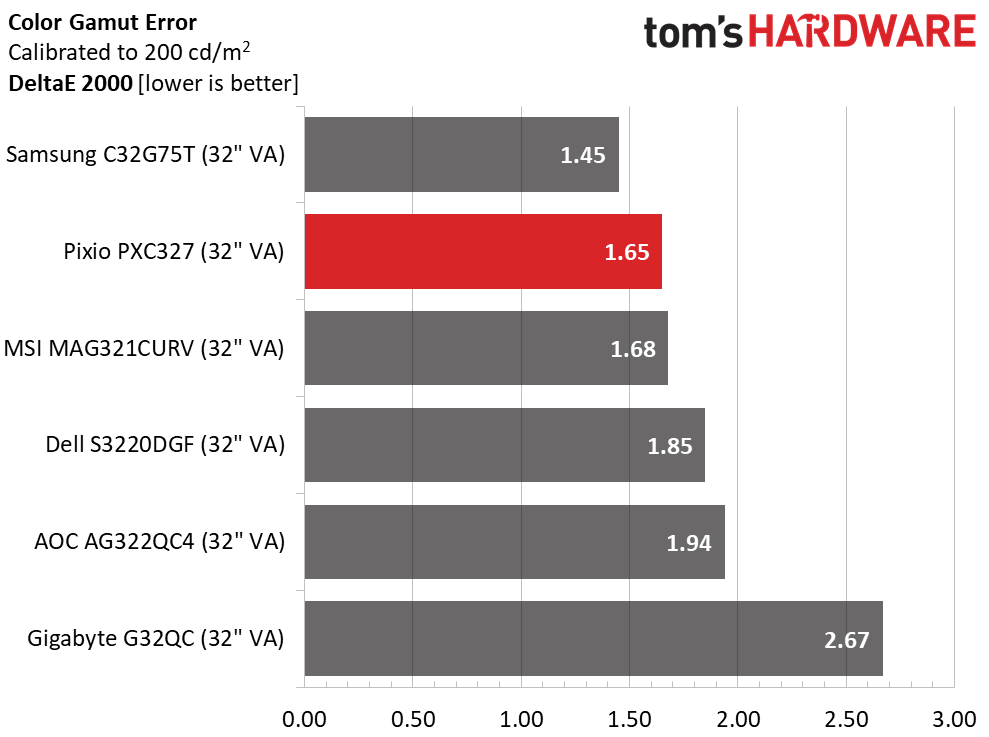

Once set up properly, the Pixio PXC327 is capable of excellent color performance. A 1.65dE average error is very low and good enough for second place in our comparison group. That’s impressive for a monitor at this price point.
The PXC327 ranks well for DCI-P3 color volume with 83.67% coverage. Only two of the monitors in the group have usable sRGB modes, the Gigabyte and MSI. The rest, including the Pixio, must be used with their native DCI-P3 gamuts. Many prefer the extra saturation of DCI-P3 for SDR material even though it’s not strictly accurate. You could also use the PXC327 for color-critical work with a software profile installed.
Current page: Grayscale, Gamma and Color
Prev Page Brightness and Contrast Next Page HDR Performance
Christian Eberle is a Contributing Editor for Tom's Hardware US. He's a veteran reviewer of A/V equipment, specializing in monitors. Christian began his obsession with tech when he built his first PC in 1991, a 286 running DOS 3.0 at a blazing 12MHz. In 2006, he undertook training from the Imaging Science Foundation in video calibration and testing and thus started a passion for precise imaging that persists to this day. He is also a professional musician with a degree from the New England Conservatory as a classical bassoonist which he used to good effect as a performer with the West Point Army Band from 1987 to 2013. He enjoys watching movies and listening to high-end audio in his custom-built home theater and can be seen riding trails near his home on a race-ready ICE VTX recumbent trike. Christian enjoys the endless summer in Florida where he lives with his wife and Chihuahua and plays with orchestras around the state.